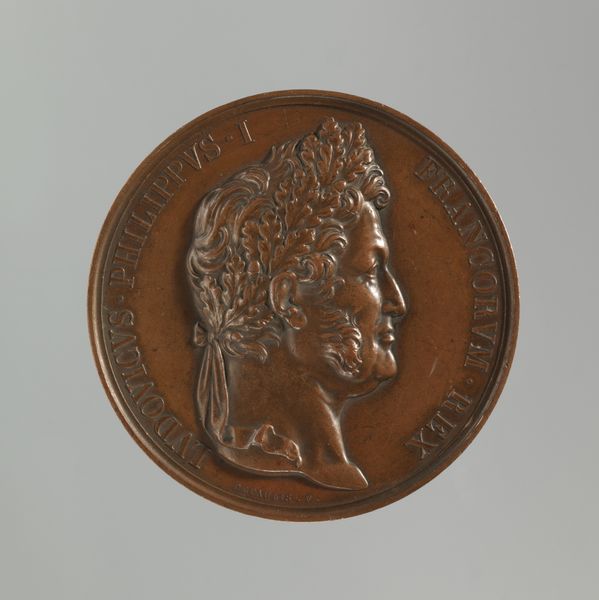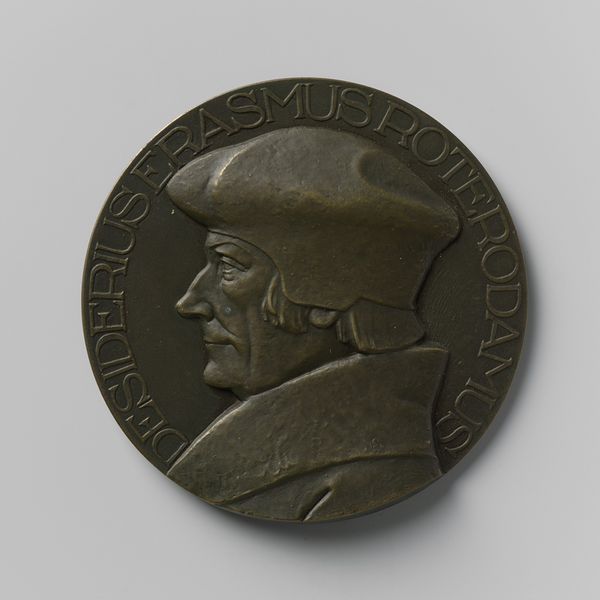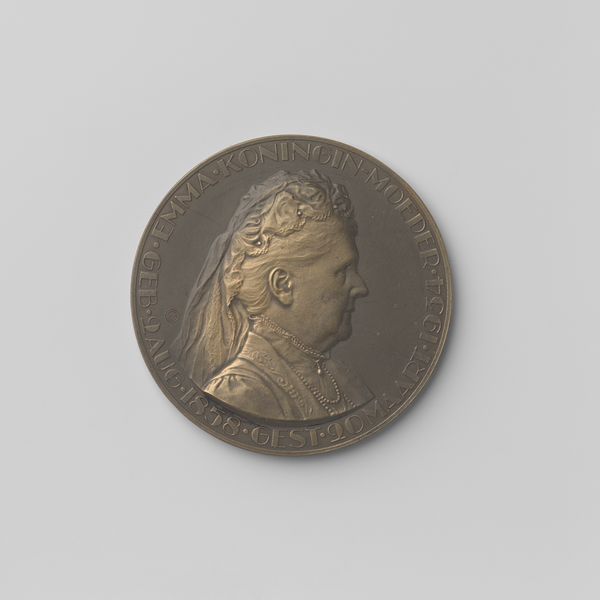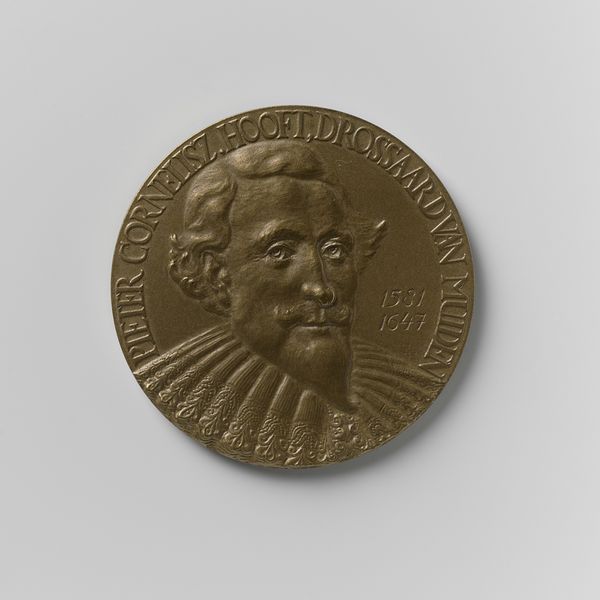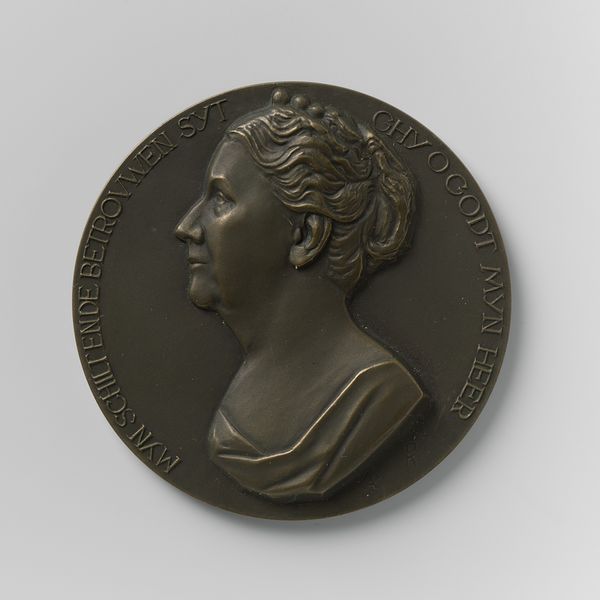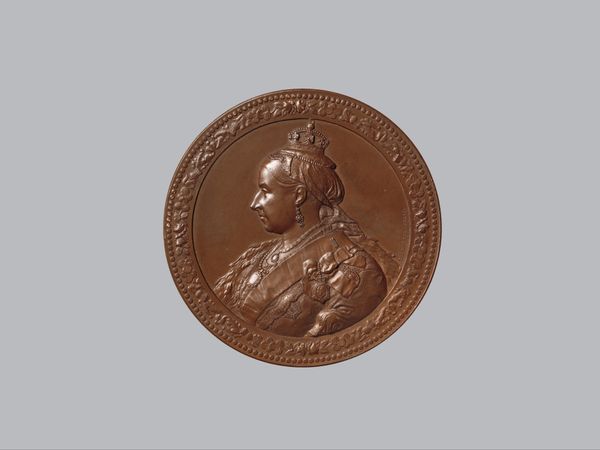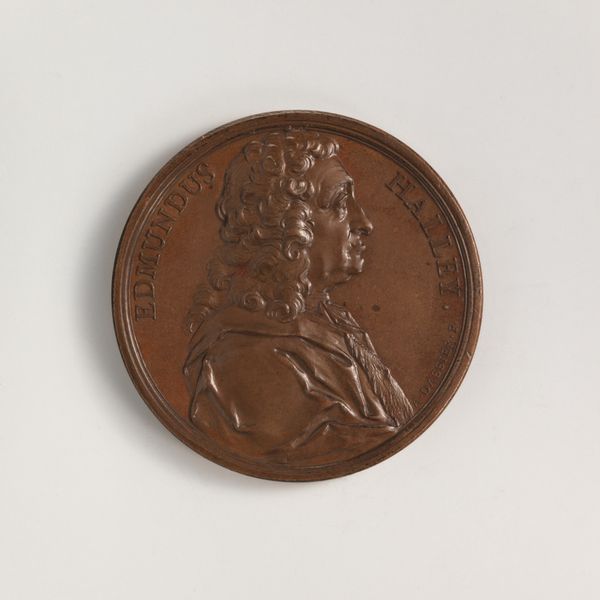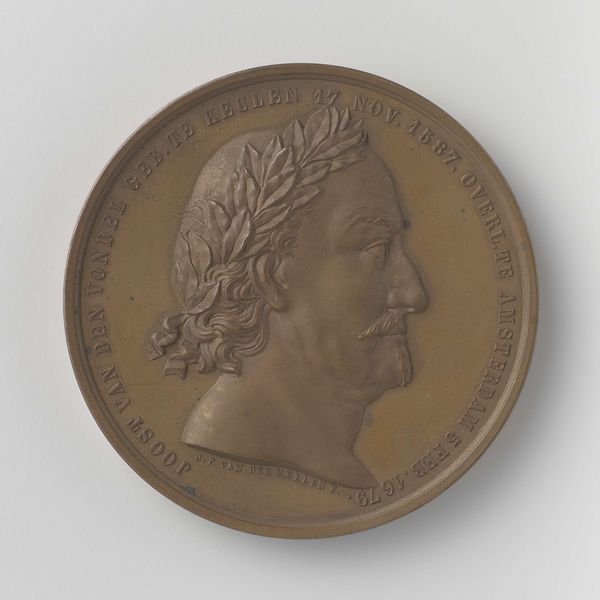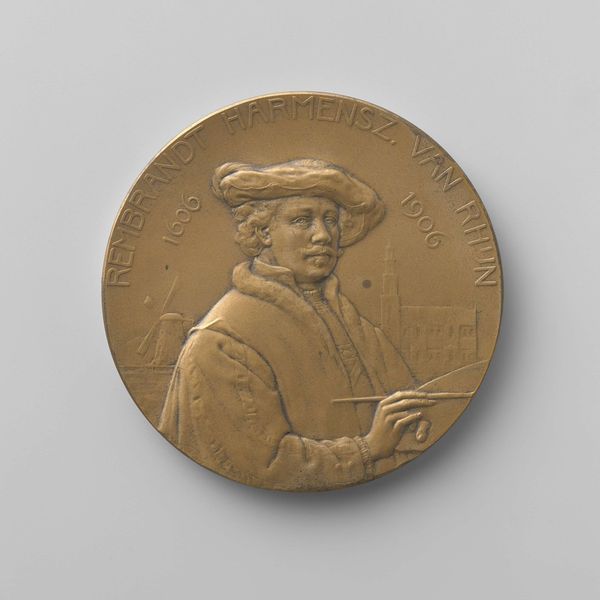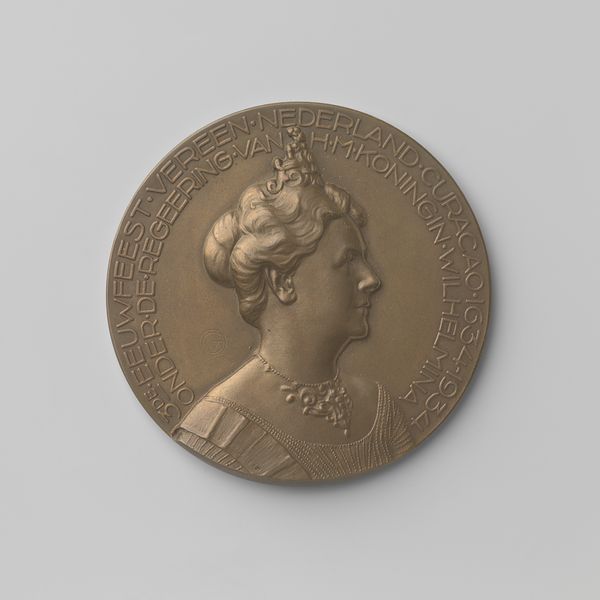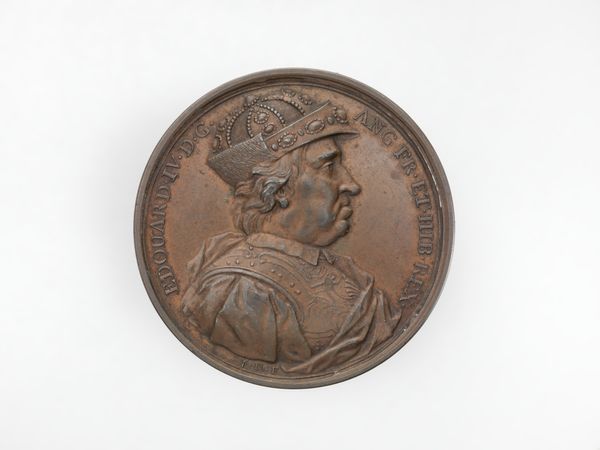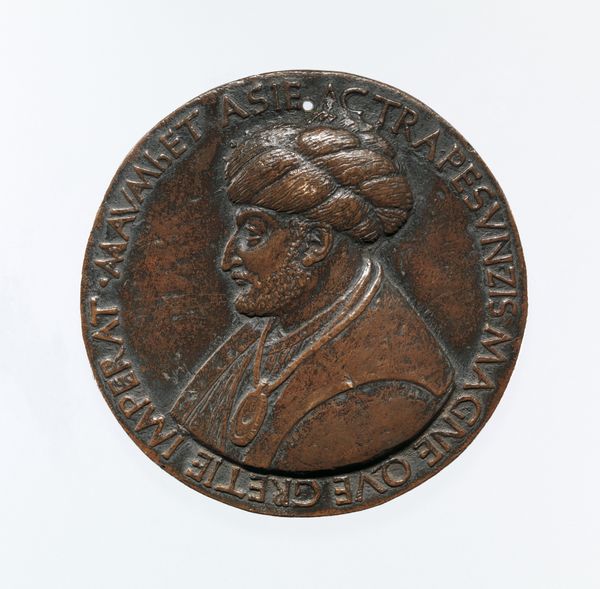
Vierhonderdjarige herdenking van de Augsburgse Confessie, gevierd in Schiedam 1930 1930
0:00
0:00
relief, bronze, sculpture
#
portrait
#
relief
#
bronze
#
figuration
#
sculpture
#
history-painting
#
modernism
Dimensions: diameter 5.0 cm, weight 47.03 gr
Copyright: Rijks Museum: Open Domain
Curator: Here we have a bronze relief sculpture by Jacob Jan van Goor, created in 1930 to commemorate the four-hundredth anniversary of the Augsburg Confession, celebrated in Schiedam. Editor: It has a very austere feeling about it, wouldn’t you say? The limited palette of bronze lends itself to the subject matter in a weighty, almost reverential manner. Curator: Indeed. The circular format echoes that of commemorative medals, creating a strong sense of historical record. Look closely at the careful articulation of the low relief. Editor: The portrait, of course, immediately brings to mind Martin Luther himself. The hat, the simple lines of his garment—these have become shorthand for his image over centuries. The inscription surrounding him, "Gods woord houdt stand in eeuwigheid," frames him as almost timeless. Curator: Precisely! Van Goor uses a refined approach to modelling, and note how the play of light across the subtle modulations accentuates his features and provides a sense of depth despite the limited space. It reinforces Luther's gaze; stoic and forward. Editor: Beyond Luther himself, the image becomes symbolic of steadfast faith and the enduring nature of belief systems, which certainly would have resonated during the rise of various ideologies in the early 20th century. Curator: It is interesting how Van Goor reduces detail while remaining representational. This tension between abstraction and realism creates a formal and conceptual dichotomy, reflective of the emerging modernist aesthetic during that period. Editor: The careful construction allows the image to work beyond just historical portraiture. It has symbolic resonance, representing more than just an individual. Curator: It definitely illustrates a significant moment in religious history, reinterpreted in a sleek, modernist design. Editor: Van Goor manages to effectively communicate not only a likeness, but the enduring spirit of reformation itself. A rather compact, though nonetheless powerful statement!
Comments
No comments
Be the first to comment and join the conversation on the ultimate creative platform.
